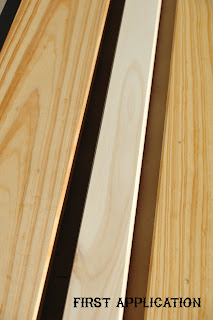While on my journey I’ve come across lots of different ways
to remove toxins. The most interesting is a practice known as oil pulling. When
I first heard about it I was a little skeptical as to how it could possibly
work. After doing research I am going to give it a try.
Oil Pulling: Oil
pulling is the practice of taking 1 tablespoon of a cold-pressed oil (such as
sesame, sunflower seed or coconut oil) and swishing it in your mouth for about
15-20 minutes. This is done soon after waking, before eating or brushing your
teeth — and it has the effect of “pulling” bacteria, parasites, mucous and
other toxins from your body through your saliva. Oil pulling started in
Ayurveda, the Hindu art of healing, which asserts that the tongue is mapped by
organ-locations. It’s said that each section of the tongue is connected to, or
corresponds to, the liver, heart, kidneys, lungs, spleen, pancreas, small
intestines, stomach, colon, and spine. When you swish the oil around the
tongue, you effectively soothe and stimulate the key meridians of the body, and
their corresponding organs.
Oil pulling also soaks up or pulls disease causing bacteria
and toxins from around the teeth. It is
said to clean the mouth better than any tooth brush or mouthwash. When removing the bacteria and toxins from
our mouth and teeth our body is able to heal other areas. To help motivate you
to want to oil pull for a full 20 minutes, here's some of the health problems
that oil pulling can help with, along with overall detoxifying of the body, (as
listed Dr. Fife's Oil Pulling Therapy book):Acne, Allergies, Arthritis, Asthma,
Back and Neck Pain, Bad Breath, Bronchitis, Chronic, Fatigue, Colitis, Chron's
Disease, Constipation, Dental Cavities ,
Dermatitis, Diabetes, Eczema, Hemorrhoids, Hypertension, Insomnia, Migraine
Headaches, Mucous, Congestion ,Peptic Ulcers, PMS, Periodontal Disease ,
Sinusitis and Tooth Abscess.
1) Immediately upon waking up in the morning, before
brushing your teeth, eating or drinking, put 1 tablespoon of either organic
cold-pressed sesame oil, organic sunflower seed oil or organic coconut oil in
your mouth.
2) Tilt your chin up and slowly swish the oil around your tongue, pulling and sucking it through the teeth, making sure you don’t swallow the oil. Do this for 15 to 20 minutes until the oil in your mouth becomes thin, white foam. You can check your progress periodically — if the oil is still yellow, continue swishing. Do not gargle the oil. Just swish it in your mouth.
3) When the oil turns white, spit it out, and then rinse the remaining oil out of your mouth.
4) Drink 1 – 3 glasses of water.
2) Tilt your chin up and slowly swish the oil around your tongue, pulling and sucking it through the teeth, making sure you don’t swallow the oil. Do this for 15 to 20 minutes until the oil in your mouth becomes thin, white foam. You can check your progress periodically — if the oil is still yellow, continue swishing. Do not gargle the oil. Just swish it in your mouth.
3) When the oil turns white, spit it out, and then rinse the remaining oil out of your mouth.
4) Drink 1 – 3 glasses of water.
If you would like to maximize the effects of oil pulling
this can be done up to 3 times a day always on a empty stomach or 4 hours after
a meal.
So I invite all of my followers to take a 10 day oil pulling
challenge with me!Starting tomorrow! I’d love to know how it makes you feel and what your
thoughts on oil pulling are! I will check in daily and update on my results! Can't wait to hear back from everyone!










